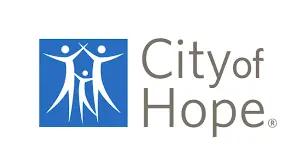
Sotorasib and Panitumumab Outperforms SOC in KRAS G12C+ mCRC

In an interview with Targeted Oncology, City of Hope cancer center’s Marwan Fakih, MD, further discussed the findings from this phase 3 trial and future directions for evaluating this combination.
Findings from the primary analysis of the phase 3 CodeBreaK 300 trial (NCT05198934) revealed that the combination of sotorasib (Lumakras) at 960 and 240 mg with intravenous (IV) panitumumab (Vectibix) improved progression-free survival (PFS) vs standard-of-care (SOC) in patients with chemorefractory, KRAS G12C-mutated, metastatic colorectal cancer (mCRC).1
With a median follow-up of 7.8 months (range, 0.1-13.9), sotorasib given at doses of 960 mg or 240 mg with panitumumab achieved a median PFS of 5.6 months (95% CI, 4.2-6.3) and 3.9 months (95% CI, 3.7-5.8) vs 2.2 months (95% CI, 1.9-3.9) with SOC, respectively. In the 960-mg sotorasib/panitumumab vs SOC arms, the hazard ratio (HR) for disease progression or death was 0.49 (95% CI, 0.30-0.80; P = .006), and the HR for disease progression or death with sotorasib/panitumumab 240 mg vs SOC arm was 0.58 (95% CI, 0.36-0.93; P =.03).
While overall survival data are still maturing, the trial, a multicenter, open-label, randomized, phase 3 study, also showed that with 960 mg sotorasib/panitumumab, 240 mg sotorasib/panitumumab, and SOC, objective response rates were 26.4% (95% CI, 15.3-40.3), 5.7% (95% CI, 1.2-15.7), and 0% (95% CI, 0.0-6.6), respectively.
Additional safety data showed that grade 3 or greater treatment-related adverse events (AEs) were observed across the 3 arms, including 35.8% of patients treated with the sotorasib 960 mg combination, 30.2% of patients treated with the 240 mg combination, and 43.1% treated with SOC, respectively. The most frequently reported AEs with sotorasib and panitumumab included skin-related toxicities and hypomagnesemia.
According to Marwan Fakih, MD, this trial confirms the benefit of sotorasib 960 or 240 mg daily with panitumumab vs SOC and provides further rationale for moving sotorasib and panitumumab in combination with systemic chemotherapy in earlier lines of treatment.
In an interview with Targeted OncologyTM, Fakih, professor in the Department of Medical Oncology & Therapeutics Research at City of Hope, a cancer research and treatment organization, lead author of the New England Journal of Medicine study, site principal investigator of the CodebreaK300 clinical trial at City of Hope, and a medical oncologist, further discussed the findings from this phase 3 trial and the future directions for evaluating this combination.
Targeted Oncology: Can you explain the results of the study?
Fakih: This phase 3 trial confirmed that the combination of sotorasib 960 mg daily with panitumumab or sotorasib 240 mg daily with panitumumab are superior to the standard-of-care regorafenib or trifluridine in terms of progression-free survival in patients with KRAS G12C who had previously progressed on standard treatments. Since PFS was the primary end point of this study, the study is deemed positive.
While both sotorasib arms were superior to standard of care, the higher dose of sotorasib was particularly efficacious with an overall response rate of 26.4% and a median progression-free survival of 5.6 months. These results are clinically meaningful and support the consideration of sotorasib 960 mg orally daily in combination with IV panitumumab 6 mg/kg every 2 weeks as the new standard-of-care for KRAS G12C metastatic colorectal cancers that have progressed following fluoropyrimidine, oxaliplatin and irinotecan.
Can you elaborate on the significance of the findings in your research, specifically the improved PFS observed in patients with chemorefractory metastatic colorectal cancer?
The median PFS of 5.6 months represents more than doubling of reported PFS with standard-of-care approaches with trifluridine/tipiracil and regorafenib. Keep in mind that in unselected patient populations with metastatic colorectal cancer, the median PFS on second line treatments is approximately 6 months. To see a median PFS of 5.6 months in a poor prognosis population with KRAS G12C represents a new milestone for third-line therapy in this population.
How might these findings influence dosing considerations in future clinical practice?
In my opinion, CodeBreaK300 establishes sotorasib 960 mg daily in combination with panitumumab 6 mg/kg IV every 2 weeks as the new standard third-line therapy for KRAS G12C mutated metastatic colorectal cancer. This dose level is in line with current NCCN guidelines.
Looking ahead, what further research is needed to build upon these data?
The combination of sotorasib and panitumumab has been combined safely with FOLFIRI [folinic acid, fluorouracil, and irinotecan] and has been associated with robust activity in this population. These data provide further rationale to moving sotorasib and panitumumab in combination with systemic chemotherapy in earlier lines of treatment. KRAS G12C inhibitors combined with EGFR inhibitors should be investigated with systemic therapy in future clinical trials in earlier lines of treatment. Such combinations may prove synergistic and may accentuate the clinical benefits over what is seen with sequential therapy.
REFERENCE
Fakih MG, Salvatore L, Esaki T, et al. Sotorasib plus panitumumab in refractory colorectal cancer with mutated KRAS G12C. New Engl J Med. Published online October 22, 2023. doi:10.1056/NEJMoa2308795








































